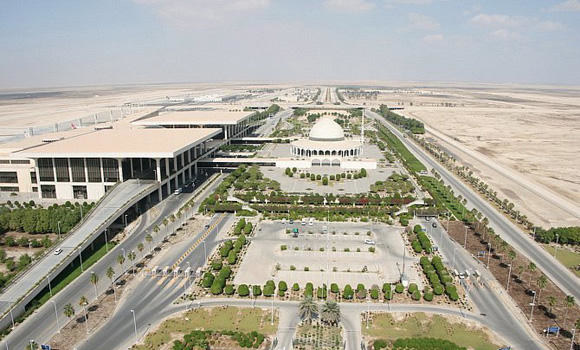King Fahd International Airport: Discover the World’s Largest Airport
When it comes to aviation giants, King Fahd International Airport (DMM) in Dammam, Saudi Arabia, takes the crown as the world’s largest airport. Spanning an impressive 780 square kilometers, this colossal airport isn’t just about size; it’s a hub of connectivity and innovation, redefining the future of global transportation.
The World’s Largest Airport: An Impressive Scale
As the world’s largest airport by land area, King Fahd International Airport covers a staggering 780 square kilometers. To illustrate its grandeur, it’s larger than the island of Hong Kong and roughly 50% bigger than Denver International Airport, the second-largest. This vast expanse sets it apart as a true aviation marvel.
Unmatched Facilities at the World’s Largest Airport
The enormous size of King Fahd International Airport allows it to offer state-of-the-art facilities:
- Extensive Runways: Featuring two parallel runways capable of accommodating the largest aircraft, including the Airbus A380, it is designed to handle significant air traffic.
- Modern Passenger Terminals: The airport’s terminal complex is equipped to serve millions of passengers annually, with top-notch amenities ensuring a comfortable travel experience.
- Advanced Cargo Operations: The airport plays a crucial role in global trade with its comprehensive cargo facilities, supporting a high volume of freight.
- Room for Growth: The expansive land area supports ongoing development and future expansions, keeping the airport at the cutting edge of aviation technology.
Strategic Importance of the World’s Largest Airport
Located in Saudi Arabia’s Eastern Province, King Fahd International Airport is strategically positioned to connect Europe, Asia, and Africa. This central location enhances its significance as a major global transit hub, similar to Dubai International Airport and Singapore Changi Airport.
Environmental Initiatives at the World’s Largest Airport
Given its massive size, the airport is committed to environmental sustainability. Implementing energy-efficient technologies and advanced waste management practices, King Fahd International Airport strives to minimize its environmental impact and lead in green aviation practices. The airport’s green initiatives align with Saudi Arabia’s Vision 2030, aiming for a more sustainable and diversified economy.
A Vision for the Future
King Fahd International Airport’s status as the world’s largest airport not only highlights its current capabilities but also its role in the future of aviation. Its vast infrastructure supports both present demands and future innovations, positioning it as a leader in the aviation industry, similar to other innovative hubs like Heathrow Airport.
Tags: airport facilities, aviation infrastructure, aviation megacity, global transportation hub, King Fahd International Airport, largest airport in the world, World's largest airport

